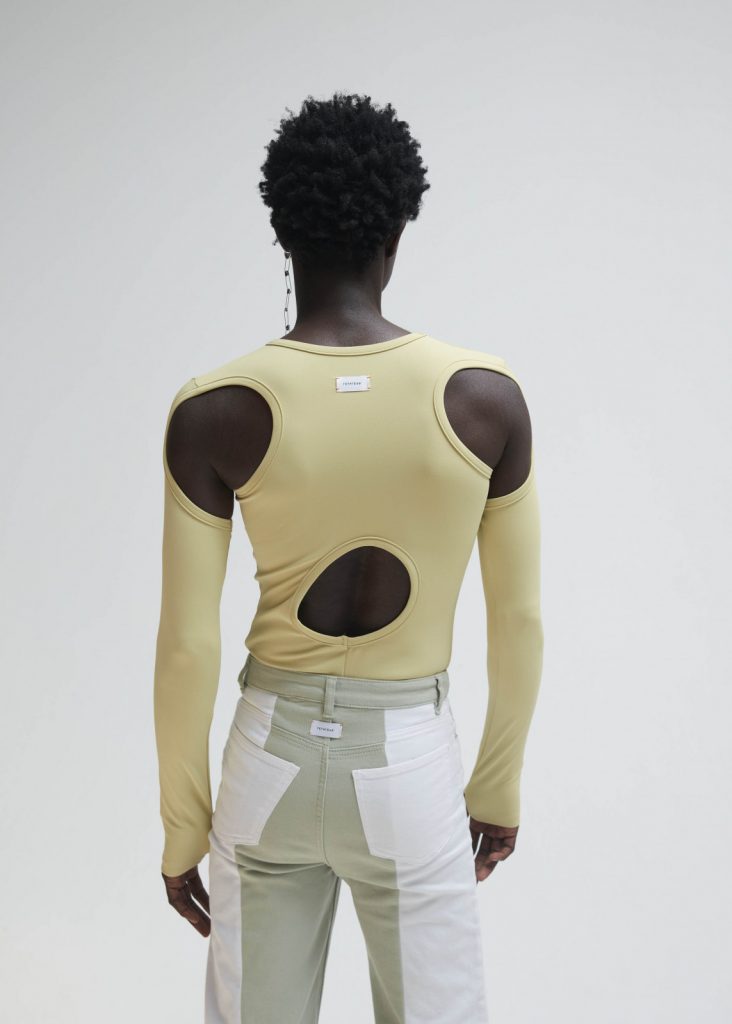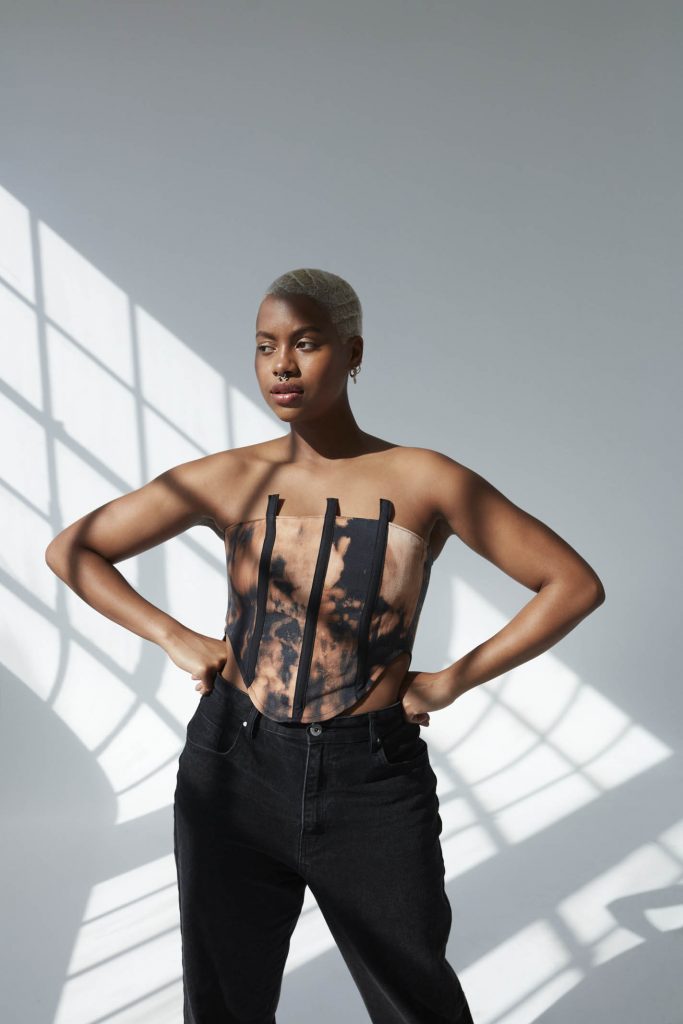Woolworths’s collection of puffer jackets made from recycled fabrics proved a hit with consumers but were they buying them for their eco-friendly qualities?
‘I haven’t bought new clothes in years,” boasts a woman going through a rail of clothing at a Slow Fashion Collective event in Woodstock, in Cape Town. Everything on offer is secondhand — “pre-loved”, in car-salespeople parlance. From Italian-made trench coats, Adidas jackets and sequined jumpsuits to a mint-condition Donna Karan two-piece in wool, one can find any type of garment from almost any era.
This may well be part of the appeal of what is now termed “thrifting” (buying secondhand clothing) but the woman at the Woodstock event is a moneyed Capetonian who chooses not to shop for ethical reasons.
“I don’t like the idea of buying things made in a sweatshop that then travel long distances.”
She is not alone; thrifting is no longer confined to a small sub-culture of bargain-hunters or fashion aficionados. There are a slew of local online platforms allowing sellers and buyers to get rid of and acquire secondhand clothing. Yaga is one such site, where you can buy brands such as Country Road, Zara or a selection made by influencers.
 Jaffe 01/02: Lisa Jaffe found she had naturally employed sustainable practices in the production of her fashion label, Guillotine, as it made good business sense. (Robert Kersner)
Jaffe 01/02: Lisa Jaffe found she had naturally employed sustainable practices in the production of her fashion label, Guillotine, as it made good business sense. (Robert Kersner)
Sustainable fashion entails many practices. The tenets were outlined in 2018 when a global movement towards sustainable fashion, dubbed the Fashion Revolution (a UK-based nonprofit organisation), enjoyed high visibility in South Africa through the Cape Town Fashion Council. Sustainability was one of terms in the manifesto and was defined as relating to fashion that “never unnecessarily destroys or discards but mindfully redesigns and recuperates in a circular way. Fashion is repaired, reused, recycled and upcycled. Our wardrobes and landfills must not overflow with clothes that are coveted but not cherished, bought but not kept.”
Two other terms, transparency and accountability, feature and relate to fashion that advances equal pay and “lifts people out of poverty”.
Twyg, the South African eco-friendly fashion platform established by Jackie May, has an award that highlights ethical labour practices, transparency in the design, manufacturing practices and sourcing of materials and the extent to which materials have been sustainably sourced.
Alexa Schempers’s upcycling fashion design label Rethread was established two years ago, during the pandemic. She says local labels promising eco-friendly fashion tended to offer “simplistic styles in natural fabrics”.
 Rethread 01/02/03/4: Alexa Schempers’s Rethread label mostly consists of upcycled garments. The Knysna-based designer typically reworks menswear items, from jackets and shirts to jeans, into new garments for women.
Rethread 01/02/03/4: Alexa Schempers’s Rethread label mostly consists of upcycled garments. The Knysna-based designer typically reworks menswear items, from jackets and shirts to jeans, into new garments for women.
Garments in her Rethread collection are body-hugging, with strategically placed slashes and cutouts. Rarely do we associate ethical clothing with a sexy punk and androgynous look. Two-toned trench coats and jeans are created by pairing the halves of different reclaimed garments. Men’s jackets are repurposed into women’s cropped jackets, with cut out backs and cheeky miniskirts, presenting an interesting blend between the genders.
“To me, the idea of resale and upcycling … made the most sense. So much already exists, so why should we make more new stuff, especially if we can use some of the existing stuff as materials?” says Schempers.
The upcycled garments are complemented by those made from scratch.
“I only use sustainable and recycled materials when I make new garments. I don’t have the supply to make enough quantities of upcycled clothing. It wouldn’t be a reasonable business. That’s why I incorporate new items. However, 80% of my garments are made by using secondhand overruns or recycled fabrics.”
As Schempers suggests, it is tough making an upcycling fashion business viable. How sustainable is sustainable fashion?
Small fashion businesses are more inclined to conform to sustainable practices, says Lisa Jaffe, founder of Guillotine, a Joburg-based fashion label that has been going for more than a decade. “The conditions of small businesses lend themselves to sustainable practices — in order to survive. An example is ethical production. Costings are spoken through with producers, so that there is a fair balance,” she says.
 Woolworths takes sustainable fashion very seriously and are big enough to make demands of suppliers. A denim collection with reclaimed fabrics.
Woolworths takes sustainable fashion very seriously and are big enough to make demands of suppliers. A denim collection with reclaimed fabrics.
Paying a fair price for the production of garments is becoming more common. A pair of pants by Mantsho, founded by Palesa Mokubung, is in the region of R8 000, a dress is R6 000. But so too is the case of newcomers such as Rich Mnisi — although you can pick up a branded jumper for about R2 000, you can pay up to R9 000 for a dress.
These designers sometimes create their own prints, which comes at a cost. The prices are perhaps more in line with how limited local design is valued in other countries but it also relates to more sustainable practices.
“You need to pay people fairly for the work that they do,” says Mnisi. “We have been conditioned to want cheap things. For me, in creating a lovely brand, I am not trying to create something flashy. I want to make the whole process fair, and there is general health in that process; that is how I arrive at any price.”
Small businesses can be more agile than larger ones at adapting to demand and only producing styles that resonate with consumers. But it is almost impossible with such small runs to be able to make demands regarding the origins of the textiles and the manufacturing processes.
“There are a lot of middlemen. You can get the place where the fabric was produced but not much more information than that,” says Jaffe.
 Rethread 01/02/03/4: Alexa Schempers’s Rethread label mostly consists of upcycled garments. The Knysna-based designer typically reworks menswear items, from jackets and shirts to jeans, into new garments for women.
Rethread 01/02/03/4: Alexa Schempers’s Rethread label mostly consists of upcycled garments. The Knysna-based designer typically reworks menswear items, from jackets and shirts to jeans, into new garments for women.
Ethical sourcing is one of the pillars of Woolworths’ sustainability policy, the company said in its 2021 Good Business Journey report. On paper, the retailer appears to be committed to sustainable practices. Given its scale and standing, it is in a position to make demands of suppliers.
“All our suppliers have social and ethical valid audits in place and we have recently published all our manufacturers’ locations/addresses,” says Lawrence Pillay, group head of sourcing at Woolworths.
“The factory has to be declared when an order is finalised and prior to the product being dispatched, we have a quality audit that confirms their location. Textile mills need to be declared and we also need responsibly sourced certification for certain commodities.”
Having high ethical standards does come with a cost but as the demand for sustainable processes has grown. This has made the production of some textiles more commercially viable, according to Pillay.
“Some elements are more expensive, like procuring from compliant factories where working conditions and wages have to comply with certain standards. As this is non-negotiable, the cost needs to be managed carefully. Other elements, like responsibly sourced cotton, have become more affordable as the global demand has increased, so there is no longer a premium for this cotton.”
What some retailers and small, high-end fashion businesses have in common is a commitment to producing garments that last. Call it slow fashion.
 Rethread 01/02/03/4: Alexa Schempers’s Rethread label mostly consists of upcycled garments. The Knysna-based designer typically reworks menswear items, from jackets and shirts to jeans, into new garments for women.
Rethread 01/02/03/4: Alexa Schempers’s Rethread label mostly consists of upcycled garments. The Knysna-based designer typically reworks menswear items, from jackets and shirts to jeans, into new garments for women.
A relationship between big retailers and small upcycling fashion labels could be in the offing. The biggest challenge Rethread faces is being limited to small runs. The solution, says Schempers, is in making advance arrangements with large retailers to buy their overruns and garments that don’t sell.
Guillotine’s clothing is manufactured and sold in Johannesburg and doesn’t have much of a carbon footprint. In contrast, Rethread is based in Knysna and their garments are couriered around the country.
Clothing at chains has more of a footprint. Only 30% of clothing sold at Woolworths is made in South Africa, with up to 50% being made in the Southern African Development Community, according to Pillay.
Schempers’s label has enjoyed relative success, attracting the majority of clients on social media platforms. Although she believes the upcycling aspect of her collection has been a selling point, she has become aware of patterns of consumption that have been accelerated through online shopping brands such as Shein.
“We all thought that the new generation was going to be extremely conscious about sustainability. Based on their behaviour, their attention spans are getting shorter and shorter. You now have players like Shein, who are overtaking Zara with the speed and the pace [of the release of new collections]. They are just growing and growing. People aren’t slowing down,
 Rethread 01/02/03/4: Alexa Schempers’s Rethread label mostly consists of upcycled garments. The Knysna-based designer typically reworks menswear items, from jackets and shirts to jeans, into new garments for women.
Rethread 01/02/03/4: Alexa Schempers’s Rethread label mostly consists of upcycled garments. The Knysna-based designer typically reworks menswear items, from jackets and shirts to jeans, into new garments for women.
they are consuming clothing faster than ever before, which is kind of scary,” she says.
To keep up with the demand for the new, Schempers not only produces new clothing but also trades in secondhand clothing items that she finds during her thrifting hauls.
“Studies have found that the main purchasing decision is often around the price,” she says.
The popularity of thrifting may well be rooted in satisfying the desire for newness at a fraction of the cost.
Woolworths wasn’t able to confirm whether consumers were demanding sustainable clothing but it claims to have had great success with “recycled polyester and nylon fabrics in product categories like winter puffers and polar fleece and swim-shorts”, Pillay says.
In the context of her small business, Jaffe has found her customers are asking more questions about where and how Guillotine’s garments are made.
“Over the last four years, I have found a natural curiosity around sustainable pillars. When we talk about our collections, design process, zero waste, sustainable practices and ethical production, there is more interest and investment in our garments. There is a genuine interest in what is locally produced. I’ve noticed a reaction to the human hands behind the collections.”